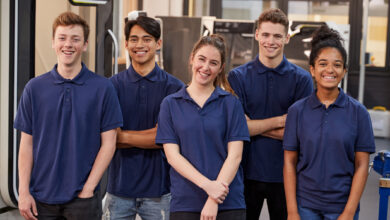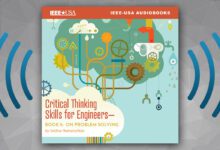
Diabetes is an awful disease. People who have it must lance themselves multiple times a day in order to obtain a drop of test blood so a meter can measure their blood sugar. The testing alone can lead to a lifetime of discomfort, especially on bruised, calloused and progressively numb fingertips. In 2006, a call from an old friend who has been a severe Type 2 diabetic for most of his adult life, prompted me to conceive of a painless lancing instrument that would work from anywhere on the body.
As I recall, he said despondently, “Chris, you’re one of those engineer genius types. Can you please develop something so I don’t have to poke my fingers so many times? If you could find another place on my body that would work, it would make a big difference.” Even though he lived hundreds of miles away, I could envision him holding up his battered fingers to the phone so I could have a closer look. He was my friend. I couldn’t say no.
The gauntlet was thrown, and every engineering fiber in me accepted. It may seem a little dramatic, but the reality of the pain and numbness of finger stick blood draw became the enemy which had to be defeated! With the help of two other Ph.D. friends, and many search engines, we spent months reading through all the available literature on developing technologies to test glucose levels without the dreaded finger stick (an achievement known as “The Holy Grail”), and found that most – using laser beams, earlobes, saliva, or human tears – were unproven, unworkable, and so far into the future that they were virtually useless to my friend.
Taking a Fresh Approach
As engineers, we like to go for the most direct line-of-site approach, so my first idea was to change the shape and size of lancets my friend would use. But I quickly realized that any lancet, or lancing process, that reliably got test blood from an alternate site, like a forearm, would require such a deep, wide lancing that the pain, and resultant bruising, would be unacceptable.
Toward the end of that first year, I realized I had to start thinking “outside the box.” It came to me that two significant, already well-established processes would be pretty useful to my mission. The first was vacuum, a means by which blood could be drawn up through a much smaller lance hole (I envisioned a child drinking a thick milk shake through a straw; the child may have to really work at it, depending on how thick the shake, but it could be done). For my first experiment, I began lancing from alternate sites on my body, usually an arm or leg, using conventional lancets and lancing processes, followed by quickly placing a cup, with a regulated vacuum pump attached, over my lance site, sucking out the air. This would tell me how much vacuum would reliably draw blood through the alternate site lance hole.
 |
| Figure 1: ACHIEVED DRAWING: Instruction sent to friend telling |
By early 2007, with more trial and error, I knew it wasn’t just the level of vacuum that was important, but also the rate at which the vacuum was applied. In fact, after about 15 inches of mercury vacuum, the rate of blood draw started to level out.
 |
| Figure 2: ACHIEVED DRAWING: Early data on blood flow from a forearm |
If vacuum were applied too quickly, the walls of the cup would press down on the skin, occluding the capillaries, so there wouldn’t be enough blood to rise up through the lance hole. Eventually, I discovered the optimum practical level of vacuum, and the correct rate at which it should be applied to get the fastest, most reliable blood draw. I was surprised that these optimum vacuum levels didn’t vary much from person to person, leading me to believe that maybe I was dealing more with the laws of physics than biological processes.
With that success, I took off my research hat and put on my creative engineering one, because I knew my friend would not want to carry around a vacuum pump, even a small battery-powered one. I also felt it would be too complicated for him to lance, as it required quickly putting a cup over the lance site, pulling a vacuum to obtain blood, then removing the cup and measuring the drop. I needed a way to have the entire lancing process triggered and occur from within the vacuum chamber. However, I obviously couldn’t pass my fingers through the chamber’s walls.
The first approach was a cocked lancer inside a chamber, with a thin hose running out the side to an independent piston/cylinder vacuum generation arrangement. The piston drew back, causing the vacuum to flow through the hose into the lancing chamber. Once the vacuum was in the chamber, the lancer was activated by a vacuum-activated diaphragm as soon as the vacuum reached about 15 inches of mercury. It may not have been too practical, but this really worked well, as it could reliably draw blood from almost anywhere on the body.
 |
| Figure 3: Early testing equipment to apply extremely well controlled external vacuum with the lancing mechanism inside the vacuum chamber. |
I was pretty happy at this point because I thought I had something that worked and was close to a product. Hah! The war between theory and engineering practicality had just begun.
On the other hand, this had potential my friend could actually use. While he loved and used it, I knew it was not practical for someone less determined than my friend, because it required too many steps. The device had no activation button, and required pushing in two plungers. The first was pressed in to generate vacuum; the second pulled out, like a slingshot, to do the lancing. Another triggering approach we tried was to put a piece of steel on the trigger, then bring a magnet close to the wall of the chamber. The magnet would pull on the steel and trigger the lancing.
As every design engineer knows, often each new improvement can be a setback. In this case, each improvement resulted in increasing the size of the device, so between 2007 and 2009, I was continually working on shrinking dimensions, correcting angles, and recalibrating springs. At the end of that two year period, it had evolved into its present geometry, about the size of a permanent marker, requiring priming and an activation button held over the lance site. With that, the blood draw process happened automatically.
Further Research into Pain-Reduction Technology
During this time period, I also realized the importance of reducing, or better, eliminating, the pain of lancing. I knew capillaries lie slightly closer to the surface of the skin than the deeper pain nerves, so I predicted that if the depth of lancing could be controlled precisely enough, the lance would penetrate just enough to reach the capillaries, and the pain nerves would remain untouched.
The problem with conventional lancing methodology is that the lancet is simply shot into the skin, and its forward motion stops when it runs out of kinetic energy, meaning it goes more deeply, and therefore hurts more if you happened to be lancing on a softer spot of skin. Conversely, it penetrates less deeply if you lance on tougher skin or callouses, so you get less blood. I soon realized that the best way to consistently control the depth of penetration was to have the lance go forward with enough energy to penetrate deeply, regardless of skin toughness, but then put in a calibrated thickness blocking element to get in the way of lance travel. Therefore, it is the calibrated blocker alone that controls penetration depth.
Getting Lucky
However, there was a problem in that even though the pain nerves were deeper than the capillaries, they were still quite close to the skin surface. Lancing would have to be so shallow that a regular lancet couldn’t get blood up through such a small hole. This is where I got lucky, because it worked out that the same ideal vacuum to get blood through a regular lance site worked wonderfully with this super-shallow lancing. I just had to change the shape of the front end that went against the skin.
The combination of vacuum and depth control really worked, blocking pain for the first time, as well as allowing lancing from anywhere on the body. But further engineering research showed that while the ideal vacuum was quite consistent between people, each person’s ideal depth (to reach the capillaries but not the pain nerves) was slightly different, so some means to allow the user to “custom tune” the penetration for their body was required.
Initially, I did this with a series of hard, plastic nozzles. The user would change nozzles until the best one was found. This concept evolved into the present soft rubber Contact Tips, which came in various blocking thicknesses, and had the advantages of softer skin contact, holding the vacuum better, gripping and holding the skin, and contouring itself to the person’s skin shape.
Engineering/Research Success
By late 2011, I had all the mechanisms dialed in. I really could reliably deliver painless blood draw from anywhere on the body using a single light hand-held instrument. Again, I naively thought I was close to having it done, but here again, I was a little overly optimistic because now came the equally complicated process of getting these concepts into production. Fortunately, I found a brilliant mechanical engineer Robert Niemeyer, of New Ventures Engineering, to work alongside me, and we started the production and function optimization of each part.
 |
| Figure 5: A walk down memory lane. The various models of |
During this production/preparation period, we spoke to hundreds of diabetics, in user groups and blogs, such as the visually impaired who relied on Braille, those working with computer keyboards, or musicians, and anyone who had lost tactile sensation due to repeated finger lancing.
Patenting
In 2009, at the incessant urging of my friend, I realized the potential value of my device as a commercial product, and knew I had to protect its inventiveness. Again, I got lucky, because I had documented everything, and got in my patenting before the Leahy-Smith America Invents Act, and was the first to file.
 |
| Figure 6: Scan of 1 of the 6 United States patents. |
My eventual patents (6 U.S.* and 22 international) were in (1) how to best mechanize my device’s established concepts in a practical manner, (2) maintain the functionality and reliability of the lancing process, (3) size reduction and (4) ease of use. With these objectives accomplished, and the encouragement of those close to me, especially my friend, I decided to bring my device, now called Genteel, to market.
*US Patent Nos. 8,460,210, 8,460,211, 8,480,596, 8,485,990, 8,485,991, and 8,657,763. Additional international patents both issued and pending.
Genteel LLC is now registered with the FDA and the USPTO.
Website: www.mygenteel.com
Summary
Over eight years in development, and with many frustrations and challenges along the way, Genteel as a product is a reality. Now, anyone-whether a diabetic, on blood thinners, or those using an at-home test kit, can reliably, repeatedly, and painlessly draw a drop of test blood from anywhere on their body. My friend is happy, which makes me happy!
Dr. Christopher Jacobs, Ph.D., is an IEEE Senior Member and Chief research engineer in the development of Genteel. He holds 75 U.S. and international patents. www.mygenteel.com







